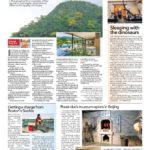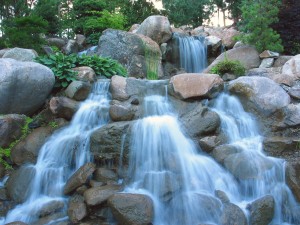In the last two articles we learn about the quality of a house based on its facing direction and period how these qualities can be enhanced by having the right mountain and water – both natural and man-made.
In this article, I will elaborate more on these land form and man-made structures.
In Feng Shui theory a mountain that has lush green vegetation is known as a “Living Dragon”. Better still if there are rivers flowing within. A “Living Dragon” is highly revered, rich in qi (or energy) and is the mountain of choice to enhance the quality of a house.
A rocky mountain without vegetation is known as a “Sick Dragon” and as you would have rightfully guessed is not favored. Those with sparse vegetation or with those that are turning yellow is viewed as lacking in qi and not favorable
A “Sick Dragon” can depreciate the quality of a house. For example, for a N2 facing period 8 house, having a “Living Dragon” mountain at the sitting side is favorable and would enhance the descendant quality – meaning relationship and health.
However if you have a “Sick Dragon” at the sitting, then you can expect your relationship and health luck to suffer.
In lieu of a real mountain, tall trees can also take the place of natural mountains. But what about another taller building nearby? Can we consider them as mountains? I will come back to this at the end of this article.
But first something about water?
In Feng Shui theory, for water to be effective, it must be clean (relatively speaking) and must flow slowly. Better still if it meanders. A river will flow quickly or slowly depending on the terrain that it passed through. When the terrain is steep, it will flow very quickly and when it reached level terrain it will flow slowly or accumulate (as in a lake or pond).
So remember, slow and meandering is favorable. Fast and straight is not.
An open area such as a playground or a field is also considered form-wise to be equivalent to water. Better still if it is lower than the house. Man-made structure such as a fish pond is also water but is not as efficacious due to it smaller size.
So what about a building? Form-wise it can be considered a mountain. In the case of the rocky mountain, the uneven surfaces is considered a “sha” capable of generating “sha qi” or “killing qi” that can be detrimental to the house.
If a building has sharp uneven surfaces, then it can be considered a “Sick Dragon” and is detrimental if it is located near enough. However most buildings are not like that and can be considered a mountain, at least form-wise.
In my opinion, a building can function like a mountain but is in no way as good as the real thing!


